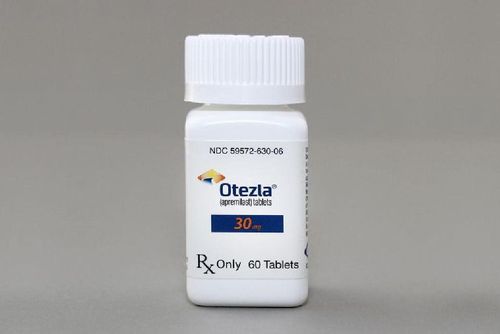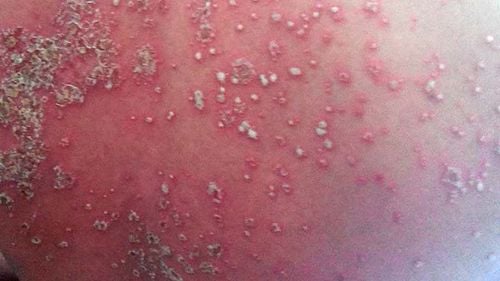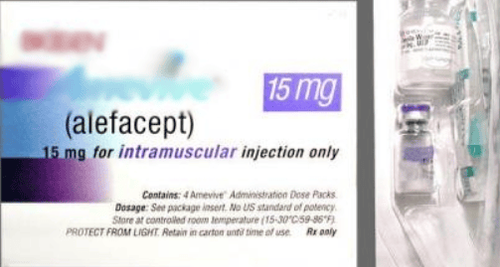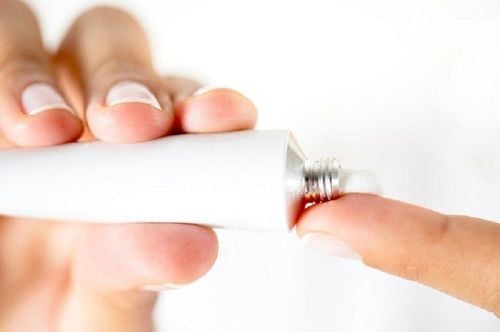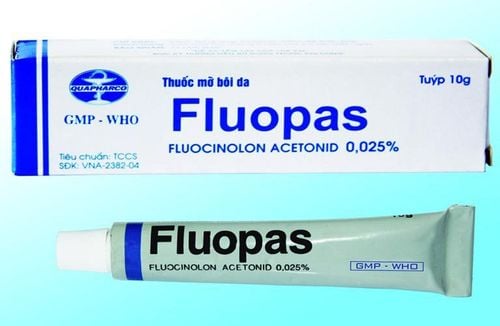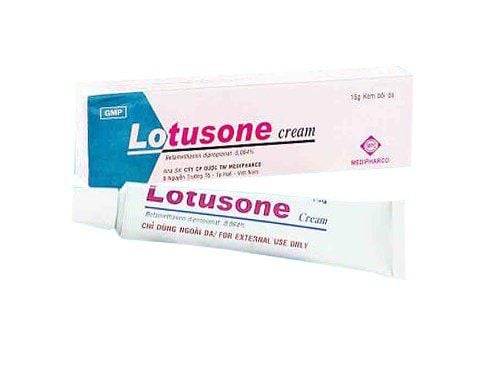This is an automatically translated article.
Psoriasis is classified into 3 grades: low affect, moderate affect, and severe affect. In this article, we'll look at the different types of psoriasis and how to minimize their effects on the body.
1. Overview of Psoriasis
Psoriasis is a condition in which new cells accumulate in the top layer of the skin, grow faster than the body's elimination rate, causing blood vessels under the skin to swell, causing thick patches, redness or plaque. Many studies suggest that genetic and immune system problems play a role in the development of psoriasis.
Although each type of psoriasis has different symptoms, most people with psoriasis will experience some of the following:
Itchy skin Burns, sores or sores on the skin Appears thick patches of skin with silvery scales Small spots appear Swelling or stiffness in the joints Psoriasis symptoms tend to be cyclical. This means they will usually become more intense for one time (called a flare) and lessen at another time. During flare-ups, symptoms can be more severe even for mild cases of psoriasis.
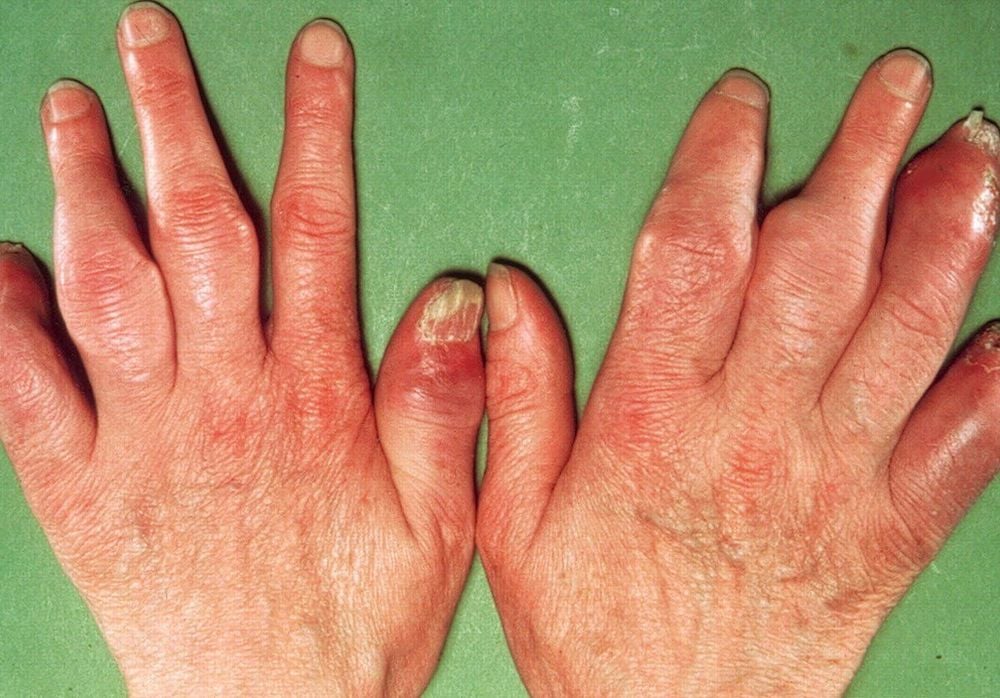
Sưng khớp là triêu chứng phổ biến mà bệnh nhân vẩy nến thường gặp
2. Types of Psoriasis
2.1 Plaque psoriasis
Plaque psoriasis is the most common type of psoriasis. The patches of skin are red, raised, and have silvery-white scales, called scales. They usually appear on the scalp, elbows, knees, and lower back. They can crack and bleed and cause pain and itching, the more you scratch them, the thicker they become. A pad can be up to 4 inches wide and possibly more. Plaque psoriasis occurs at any age, but it is more common in adults.
Treatments for plaque psoriasis vary depending on how mild or moderate the disease is and often require testing before determining the best treatment combination for a patient. Treatment options include exposing the skin to ultraviolet (UV) light, creams, and ointments applied to the affected areas to slow skin growth. Systemic psoriasis medications are rarely used for mild psoriasis. However, these drugs may be used if other treatments fail.
2.2 Scalp psoriasis
About half of people with psoriasis have scalp psoriasis. The appearance of dandruff-like scalp psoriasis is yellow and greasy, sometimes the skin on the scalp is just slightly rough or flaky.
Scalp psoriasis often has the same symptoms as plaque psoriasis. In scalp psoriasis, plaques appear on the scalp and under the hair at the nape of the neck.
People with scalp psoriasis can have psoriasis on other parts of the body at the same time. Other symptoms of scalp psoriasis include:
Thick red patches of skin on the scalp Silvery flakes like dandruff on the scalp Itching and bleeding scalp Dry scalp Temporary hair loss during flare-ups Scalp psoriasis treatment is similar to plaque psoriasis, and it can take some time to figure out the best method to treat it. Treatments for scalp psoriasis include:
Medicated shampoos and ointments UV light therapy Injections Scalp therapy In more severe cases, medications have side effects that affect health health can be added to the treatment regimen.
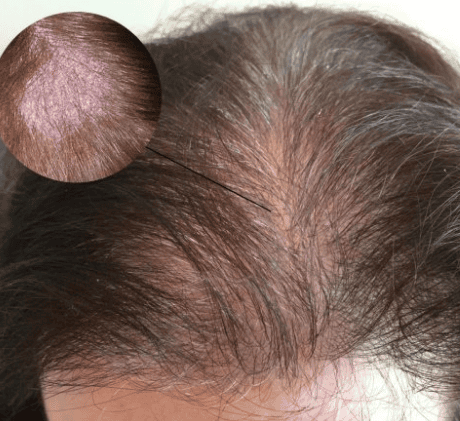
Bệnh vẩy nến da đầu thường gây ngứa đầu và rụng tóc
2.3 Guttate psoriasis
This type of psoriasis usually begins in childhood or young adulthood and appears after an infection. Triggers for this type of psoriasis include strep throat, the flu, colds, and upper respiratory infections. Up to 10% of people with psoriasis have these types of conditions. Guttate psoriasis is characterized by red dots and spots that spread throughout the skin. The dots and spots are not as thick as the plaque in plaque psoriasis.
Usually, guttate psoriasis is mild psoriasis. However, in some cases, it can cause moderate to severe symptoms. Symptoms may include:
Appearance of small, red spots on the skin, potentially hundreds of red dots on the skin Rash can appear anywhere but mainly on the trunk Sudden onset after during illness or infection Most doctors consider topical treatments to be very effective for guttate psoriasis. However, people with this psoriasis may find applying the cream to so many individual points on the body very tiring, so topical treatments may be used more when the body is exposed. ban in a small area. Treatment options such as light therapy can be selected.
2.4 Inverse psoriasis
This psoriasis looks like shiny, bright red and very painful patches on the body. The area around them is usually smooth and free of silvery scales. They appear only where the skin touches the skin, places called folds of the skin. Common areas are armpits, groin, genitals, buttocks, under breasts, and behind the knees. Rubbing and sweating can make the condition worse. People with inverse psoriasis often have other forms of psoriasis in different places on the body.
The areas of the body most commonly affected by inverse psoriasis tend to be quite sensitive and have thinner skin than other areas. This can make it more difficult to treat this type of psoriasis. Steroid creams and ointments are effective, but the risk of side effects is higher due to the thinness of the skin.
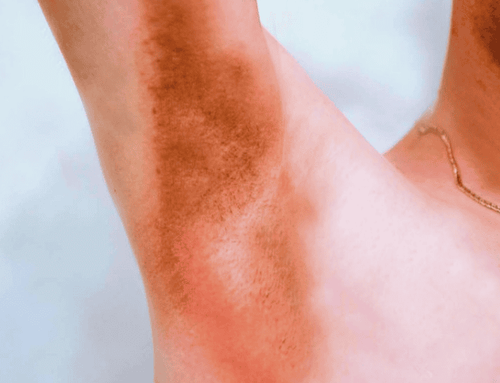
Hình ảnh bệnh vảy nến nghịch đảo ở nách
2.5 Pustular psoriasis
This type of psoriasis is relatively rare, it can be a reaction to infection, stress, medication, or exposure to certain chemicals. It causes red, swollen patches of skin with pus-filled bumps (called pustules). When they dry, they turn yellow-brown and scaly, often appearing on the palms or bottoms of the feet, and blisters can burst, leaving the skin cracked and painful.
Before the blisters appear, the skin tends to be red. Once the blisters have disappeared, the skin may become scaly. A particular type of psoriasis called palmoplantar pustulosis causes blisters on the palms and soles of the feet. These blisters will over time turn brown and become brittle.
Some forms of pustular psoriasis can be difficult to treat. Doctors will often switch between oral medications and light therapy, to reduce the risk of side effects. Acitretin and methotrexate are two medications that can treat the condition quickly and clear up affected areas of skin. Pustular psoriasis that affects only one area of the body can also be treated with medications applied to the skin.
This type of pustular psoriasis can sometimes be life-threatening. Go to the hospital immediately if the swelling spreads rapidly throughout the body. Other urgent symptoms are severe itching, rapid pulse, fever, muscle weakness, and chills. This sudden form is known as the von Zumbush variant
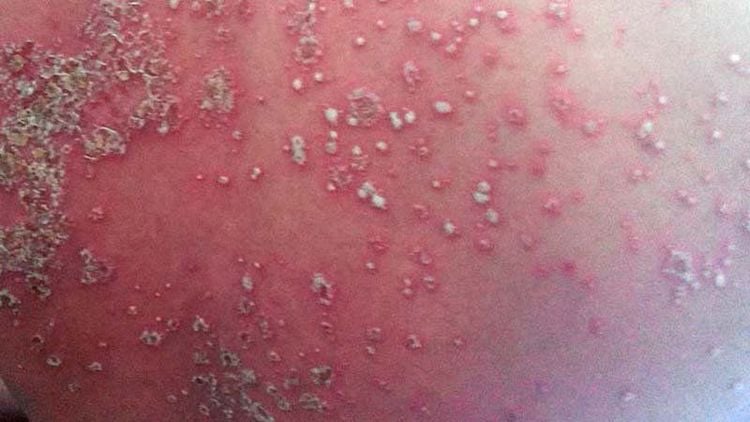
Bệnh vẩy nến thể mủ rất hiếm gặp nhưng rất khó điều trị
2.6 Erythrodermic psoriasis
This rare form of psoriasis causes large areas of skin to turn bright red, like a sunburn, and then peel off the body. While most forms of psoriasis tend to be mild or moderate, quite severe erythrodermic psoriasis can be life-threatening. This type of psoriasis is caused by the use of drugs such as corticosteroids or plaque psoriasis, von Zumbusch psoriasis that is not treated in time.
Unlike symptoms of other types of psoriasis, which are usually mild, symptoms of erythrodermic psoriasis tend to be more severe. These may include one or more of the following symptoms:
Inflamed, red areas of skin Flaking, burning skin Severe itching, pain, or burning Faster heartbeat Fever or low body temperature Swelling feet or ankles People with pityriasis rosea are prone to infections. They can also have other serious problems, including heart failure and pneumonia.
People with this psoriasis often need to be hospitalized. Unlike in the case of mild or moderate psoriasis. Instead, most people with this psoriasis need medication that doesn't affect the whole body.
2.7 Nail psoriasis
About half of people with nail psoriasis have skin cells that build up under the nails and cause them to become thick. They often split or crack, in severe cases they may crumble or fall off or they may have reddish brown or yellow spots underneath. Sometimes the surface has small indentations in it that, like spikes, when peeled off from the underlying skin (nail bed), it is called onycholysis.
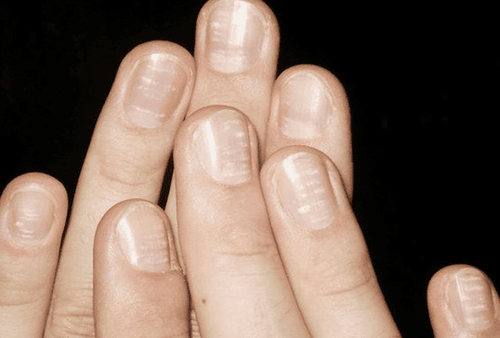
Hình ảnh bệnh vẩy nến ngón tay
2.8 Psoriatic arthritis
About one-third of people with psoriasis experience joint pain, stiffness, and swelling. When both of these problems occur, it is called psoriatic arthritis or psoriasis. Symptoms don't have to happen all at once, often patches of dry, red, and silvery skin often come first. Common manifestations in people with this condition are broken nails and color changes.
Most types of psoriasis tend to be mild to moderate, with the exception of erythrodermic psoriasis which is the most severe. Psoriasis varies in appearance and symptoms, but most treatments are very similar. Most people with mild psoriasis can manage their symptoms using topical treatments.
However, if a person has moderate to severe symptoms, a doctor may prescribe a relatively new treatment called biologics. When you have psoriasis symptoms should consult your doctor before starting treatment. People with symptoms of psoriasis rash should go to the hospital for advice and treatment.
At Vinmec International General Hospital, there is a package of examination and advice on treatment of atopic dermatitis for all customers of all ages. Customers are at risk such as allergies, being affected by ambient conditions such as weather, climate, and humidity. There are symptoms such as: There are vesicles concentrated in clusters, red raised bumps above the skin surface or thick, scaly patches of skin, concentrated in clusters, patches or scattered; Lesions are common on the cheeks, chin, forehead, elbow folds, and hamstrings and may be scattered throughout the body. At the lesion site, there is itchy skin, intense itching, especially at night, there may be bacterial infection at the itch...
When signing up for the package of examination and consultation for treatment of atopic dermatitis, customers will be examined and performed tests including:
Dermatological examination. Perform tests such as: quantification of IgE, fresh mycobacteria, specific IgE for respiratory - food allergens (Panel 1 Viet), test Rida Allergy Screen (panel 1). Details of the service package of examination and consultation for treatment of atopic dermatitis as well as other services at Vinmec, please book an appointment on the website for the best service.
Articles refer to sources: medicalnewstoday.com, webmd.com
Please dial HOTLINE for more information or register for an appointment HERE. Download MyVinmec app to make appointments faster and to manage your bookings easily.




